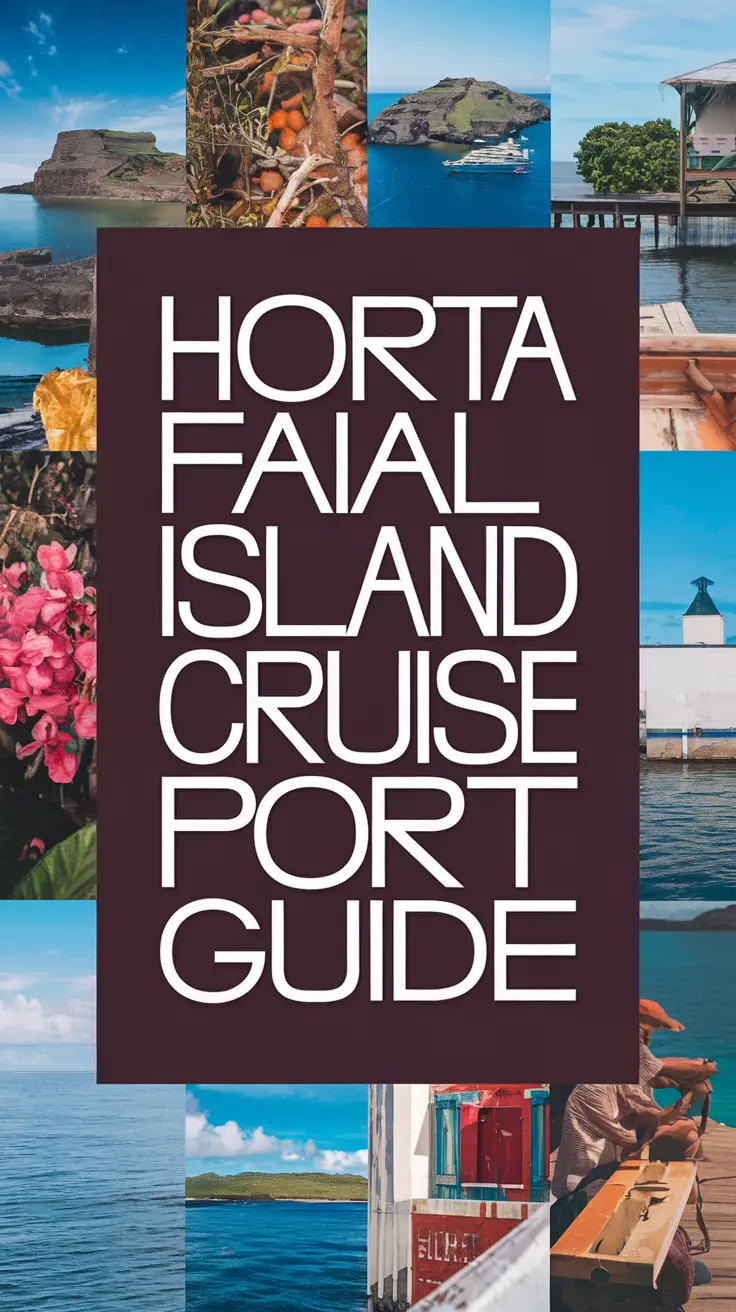
Picture this: I’m standing on the deck of a magnificent cruise ship at dawn, watching the sun paint the volcanic slopes of Pico Mountain in shades of gold and amber across the water. The sweet scent of hydrangeas – those impossibly blue hydrangeas that seem to grow wild everywhere on Faial – drifts on the Atlantic breeze. This was my first glimpse of Horta, and I knew immediately why sailors have been calling this place their “Atlantic crossroads” for centuries. The harbor was dotted with hundreds of colorful murals painted by visiting sailors on the marina walls, each one telling a story of ocean adventures and dreams fulfilled. Little did I know that this charming Azorean port would become one of my absolute favorite places to begin or end a cruise adventure.
For other Azores Cruise destinations check out our Azores Cruise Ship Port Guide page.
Map of Horta - Faial Island Cruise Ship Port
Discovering Your Gateway to the Atlantic
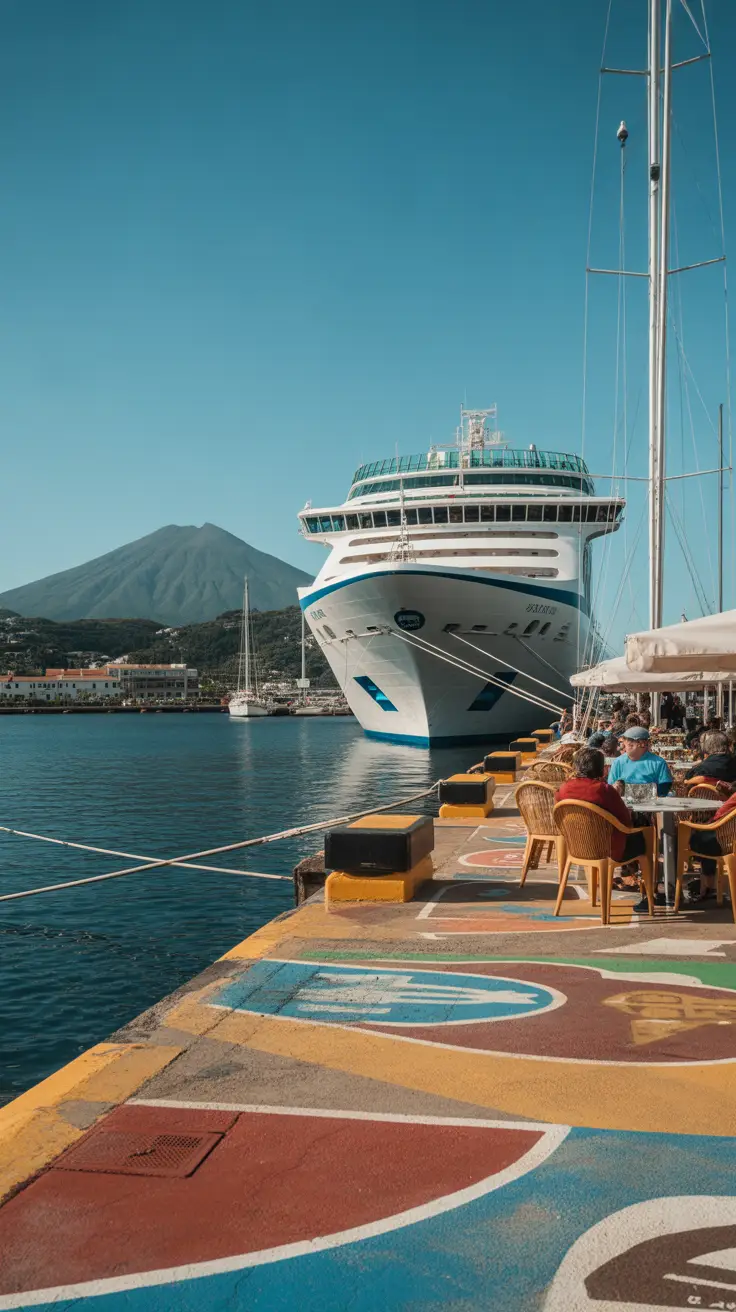
Horta, nestled on the southeastern coast of Faial Island in Portugal’s Azores archipelago, isn’t just another pretty port – it’s a living, breathing testament to maritime history and volcanic wonder. This compact city of roughly 15,000 souls has been welcoming weary sailors since the 15th century, and today it serves as one of the most strategically important cruise ports in the mid-Atlantic. The moment you step ashore, you’ll understand why this UNESCO-recognized marina has captured the hearts of everyone from Christopher Columbus to modern-day cruise enthusiasts.
What makes Horta truly special is its unique position as both a destination and a stepping stone. Sitting roughly 900 miles west of mainland Portugal, it offers cruise passengers the rare opportunity to experience authentic Azorean culture while serving as a perfect launching point for transatlantic crossings or island-hopping adventures. The dramatic backdrop of the Caldeira – Faial’s massive volcanic crater – reminds you constantly that you’re standing on one of nature’s most spectacular creations.
Why Choose Horta as Your Cruise Starting Point?
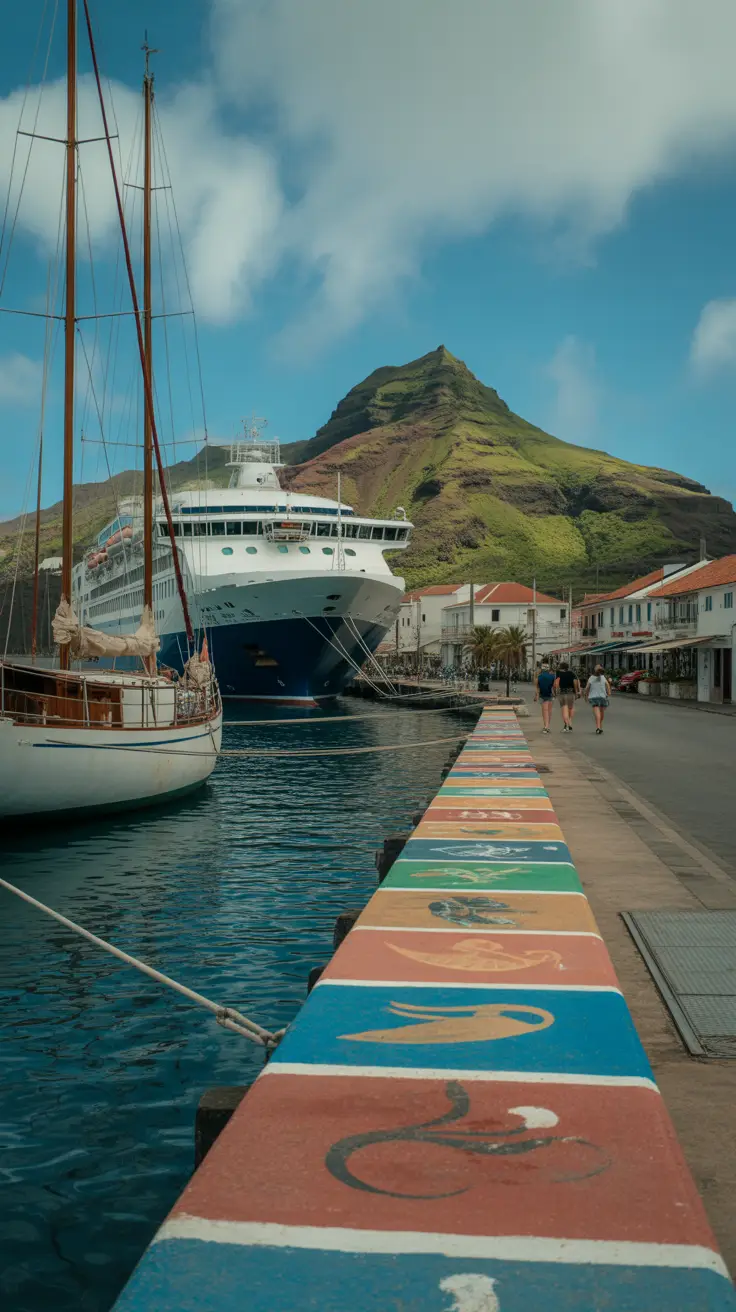
After sailing from dozens of ports worldwide, I can confidently say that Horta offers something truly unique: the perfect blend of convenience and authentic island charm. Unlike the often chaotic embarkation experiences at mega-ports like Barcelona or Miami, Horta provides a refreshingly relaxed beginning to your cruise adventure. The entire city center is walkable, the locals are genuinely welcoming (and many speak excellent English), and you’ll never feel like just another tourist in a sea of cruise passengers.
The practical advantages are equally compelling. Horta’s compact size means shorter transfer times, easier navigation, and more time to actually enjoy your pre-cruise experience rather than fighting through crowds and traffic. The port’s location also opens up unique itinerary possibilities – think exotic routes to the Caribbean via Bermuda, Mediterranean crossings that avoid the crowded western European ports, or the increasingly popular “Atlantic Triangle” routes that include the Azores, Madeira, and Canary Islands.
“Horta has always been special to maritime travelers,” explains Marina Director Carlos Medeiros. “We see cruise passengers who arrive stressed from big city ports, and within hours they’re relaxed and smiling. There’s something about our island pace and the warmth of our community that just melts away travel anxiety. Many tell us their cruise really begins the moment they set foot in Horta, not when they board the ship.”
From a weather perspective, Horta is blessed with one of the most stable climates in the Atlantic. The Gulf Stream keeps temperatures moderate year-round, and while the Azores can be breezy (it’s an island in the middle of the ocean, after all), the dramatic weather that can plague other Atlantic ports is rare here. I’ve departed from Horta in December wearing just a light jacket while friends were dealing with snow delays in European ports.
Understanding Horta’s Cruise Facilities
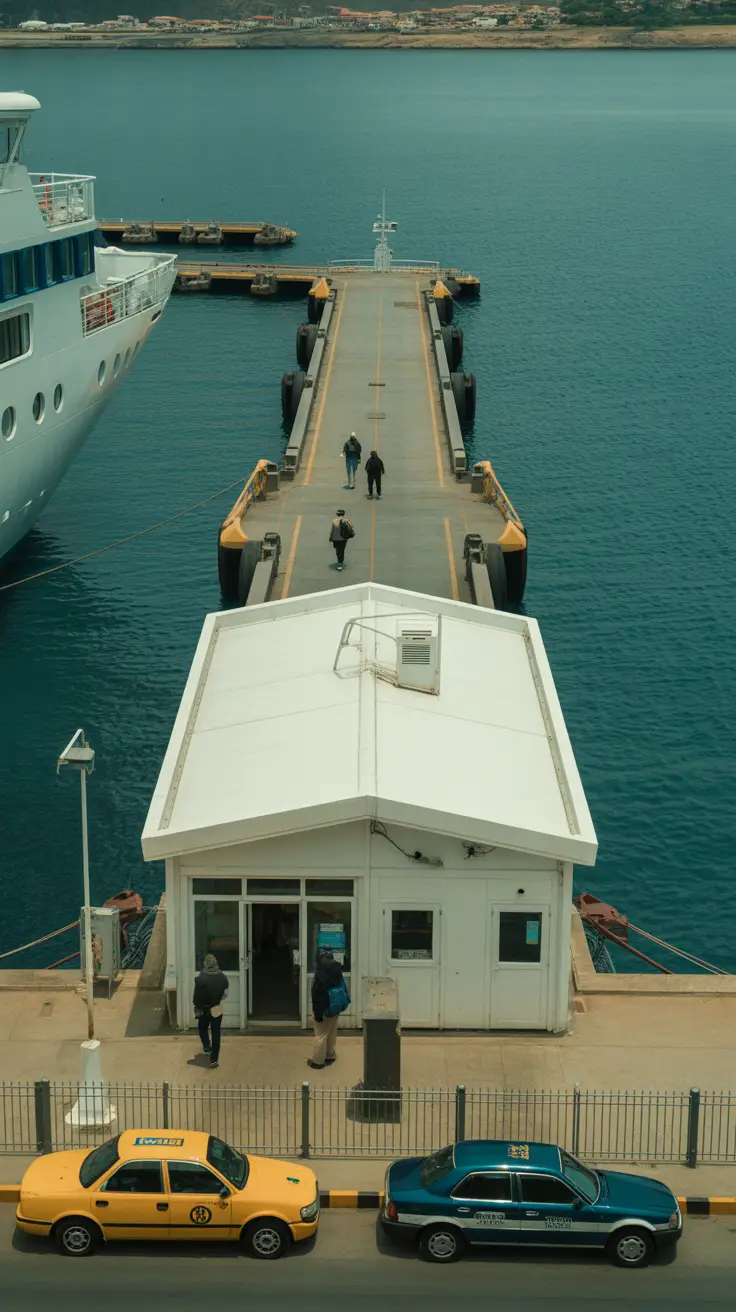
Here’s where Horta shows its practical side beautifully. The cruise facilities are refreshingly straightforward – no massive terminal complexes to navigate or confusing shuttle systems to decipher. The main cruise terminal sits right in the heart of the marina area, a stone’s throw from the famous Peter Café Sport and the historic city center.
| Terminal | Luggage Storage | Facilities | WiFi Availability |
|---|---|---|---|
| Main Cruise Terminal | Yes, 4-8 hours before sailing | Basic waiting area, restrooms, information desk, small gift shop | Yes |
| Marina Pavilion (overflow) | Limited | Restrooms, outdoor covered waiting | No |
The beauty of Horta’s setup is its simplicity. You won’t find elaborate shopping complexes or food courts here – instead, you get authentic local businesses just steps away from where you’ll board your ship. The terminal building itself is modest but efficient, with staff who actually seem to enjoy helping travelers rather than just processing them through a system.
One insider tip: arrive early not because you need to, but because you’ll want to. The marina area is genuinely fascinating, and watching the cruise ship prepare for departure while sipping a gin and tonic at Peter Café Sport is one of life’s simple pleasures.
Getting to Horta Port: Your Transportation Options
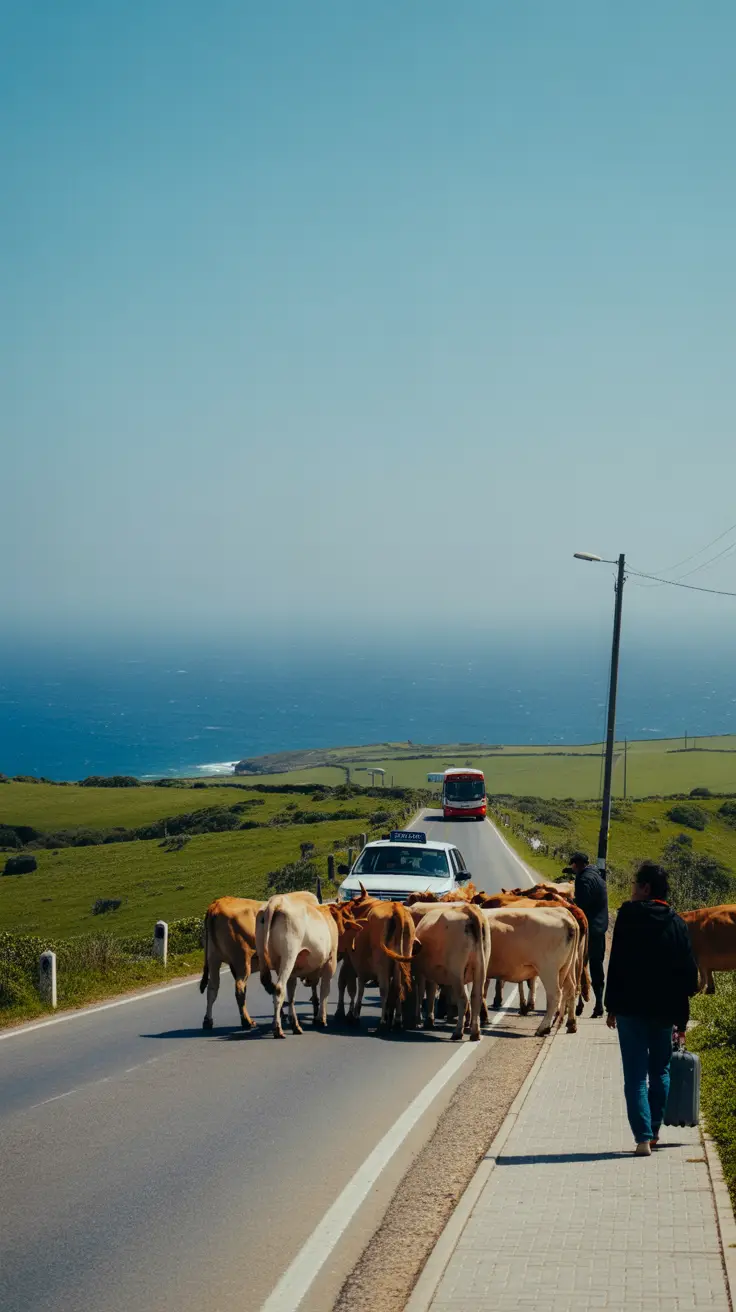
Transportation in the Azores operates on “island time,” which means things move at a relaxed pace but generally work out just fine. From Horta’s city center, you can literally walk to the cruise terminal in under 10 minutes – one of the shortest port transfers you’ll find anywhere in the cruise world.
| Transport Option | Cost Estimate (€) | Travel Time | Frequency | How to Book/Use |
|---|---|---|---|---|
| Walking from city center | Free | 5-10 minutes | Continuous | Just walk! |
| Taxi from city center | €5-8 | 3-5 minutes | On demand | Hail on street or call |
| Taxi from Horta Airport | €15-20 | 15-20 minutes | On demand | Available at airport or pre-book |
| Hotel shuttle | €5-15 | 10-15 minutes | Scheduled | Book through hotel |
| Rental car | €25-40/day | 10-15 minutes from airport | N/A | Major agencies at airport |
Flying into Horta is wonderfully straightforward compared to major cruise ports. The airport is tiny, efficient, and rarely crowded. I’ve never waited more than 15 minutes for my luggage here, and the taxi drivers actually know where they’re going (a refreshing change from some ports where drivers seem as confused as passengers).
If you’re flying in from mainland Europe, TAP Air Portugal and Azores Airlines provide regular service. The flight from Lisbon takes about two hours, and the approach over the islands is absolutely spectacular – try to snag a window seat. From North America, you’ll typically connect through Boston, which has direct seasonal service to the Azores.
Parking and Port Accessibility

Parking in Horta is remarkably stress-free, especially compared to larger cruise ports where finding a spot can feel like winning the lottery. The port area offers several convenient options:
- Marina parking lot: Right next to the terminal, €3-5 per day, perfect for short-term stays
- City center parking: Multiple small lots within walking distance, €2-4 per day
- Street parking: Free in many areas, but check signs for time limits
- Long-term covered parking: Available at the airport, €6-8 per day with shuttle service
- Hotel parking: Many hotels offer parking packages for cruise guests, even if you’re not staying overnight
Accessibility is generally good throughout Horta, though keep in mind this is a historic port city built on volcanic slopes. The main terminal and marina areas are well-maintained and accessible, but some of the charming cobblestone streets in the old town can be challenging for those with mobility issues. The good news is that most cruise-related facilities are clustered in the flatter, more modern marina district.
See what’s on offer from the Port of Praia da Vitória – Terceira Island for a different Azores Cruise destination.
Dining Near the Port: Where Flavor Meets the Sea
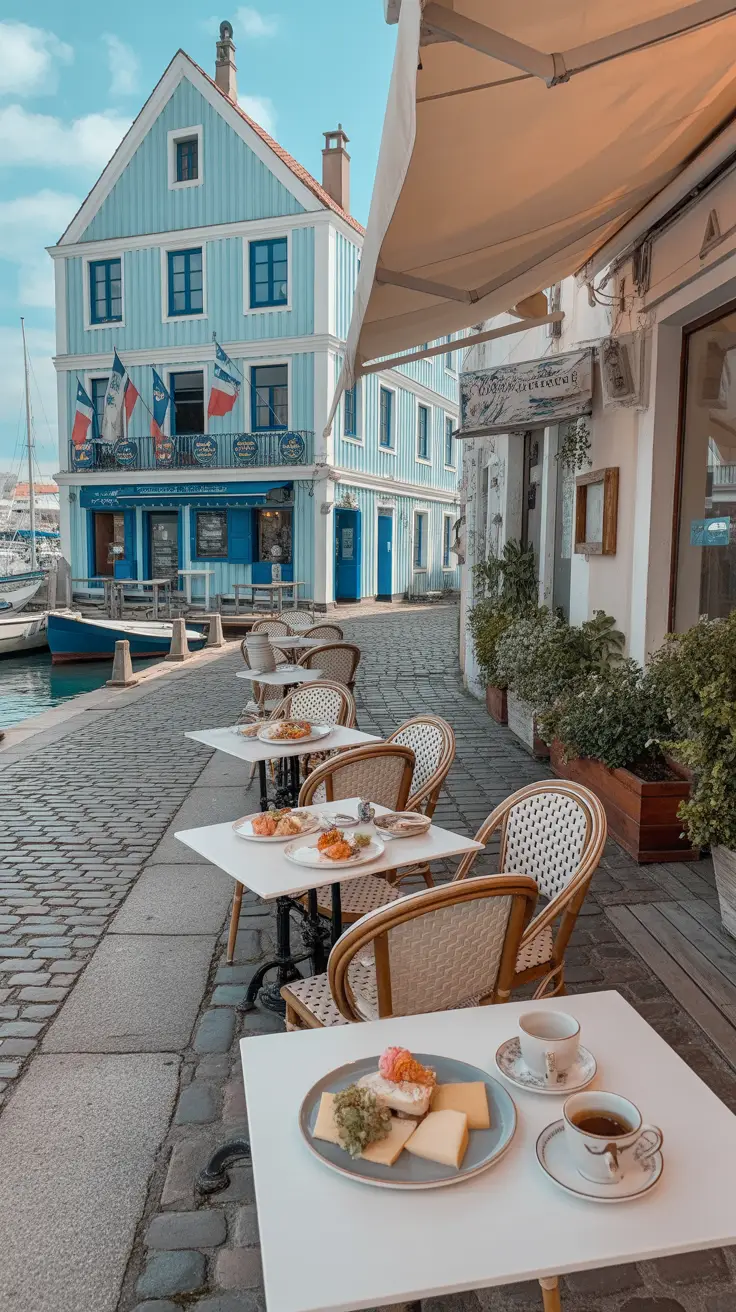
One of Horta’s greatest gifts to cruise passengers is its incredible dining scene, all within easy walking distance of the port. These aren’t tourist traps designed to catch cruise passengers – they’re genuine local establishments that happen to be conveniently located.
Peter Café Sport tops every list for good reason. This legendary sailor’s hangout has been serving legendary gin and tonics and hearty Azorean dishes since 1918. The walls are covered with photos and memorabilia from visiting sailors, and the staff treats everyone like family. Their linguiça (local sausage) and fresh fish are exceptional, but honestly, just sitting at the bar and soaking in the maritime atmosphere is worth the visit.
Genuino offers the best fine dining experience within walking distance of the port. Chef João’s modern take on traditional Azorean cuisine is consistently excellent, and their wine list features some spectacular local bottles you won’t find anywhere else. The alcatra (pot roast) here is legendary among locals.
Taberna Real serves authentic, no-frills Azorean comfort food in a cozy setting that feels like eating in someone’s home. Their seafood cataplana (a traditional stew) is phenomenal, and the prices are refreshingly reasonable.
Café Internacional is perfect for a quick breakfast or light lunch before boarding. Their pastéis de nata (custard tarts) rival anything you’ll find in Lisbon, and the coffee is consistently excellent.
Pre-Boarding Exploration: Walks Worth Taking
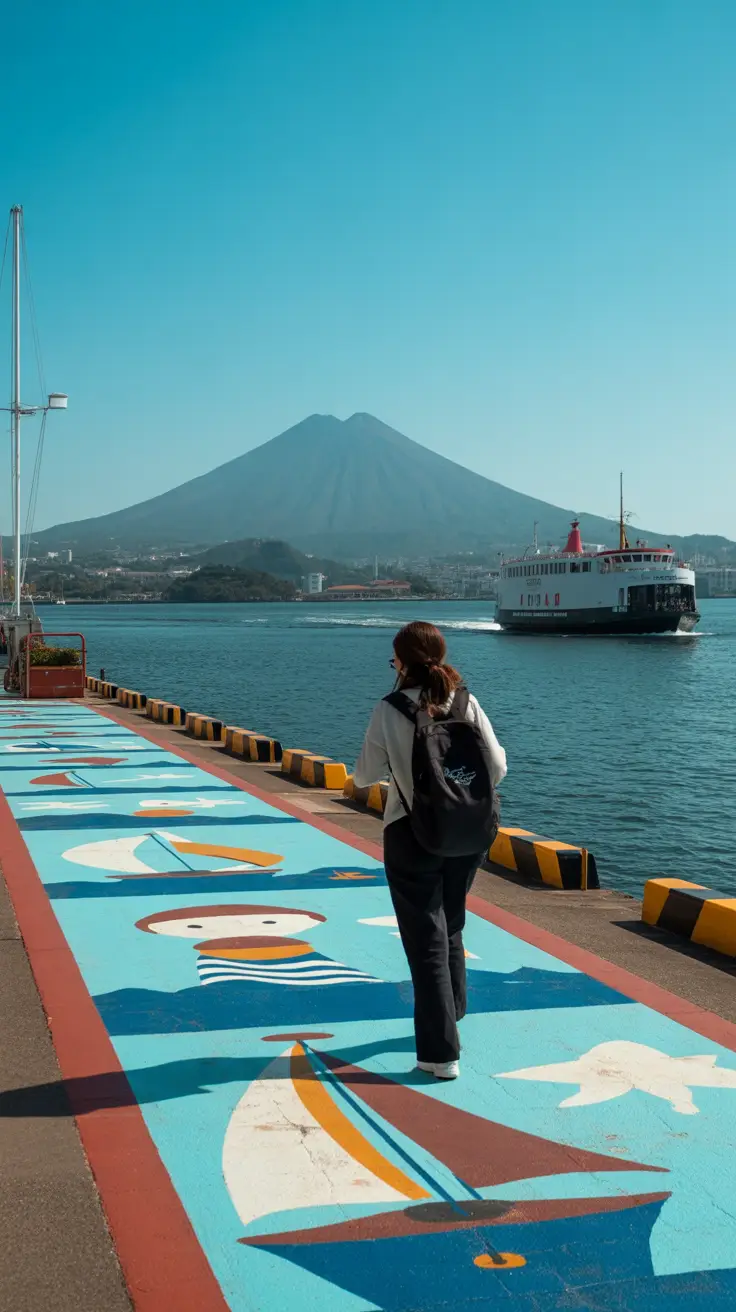
The Marina Wall Art Walk starts right at the cruise terminal and covers about half a mile of fascinating maritime murals. Every visiting sailor is encouraged to paint something on these walls, creating an ever-changing outdoor gallery that tells thousands of ocean stories. Allow 30-45 minutes to really appreciate the artistry and read some of the inscriptions – you’ll find messages from sailors from every corner of the globe.
The Historic Center Stroll begins at the Igreja do Carmo (Carmo Church) and winds through Horta’s charming old town for about a mile. The route takes you past beautiful examples of traditional Azorean architecture, several small museums, and ends at the Horta Museum, which houses fascinating exhibits about the island’s whaling history and volcanic formation. The walk takes 45-60 minutes at a leisurely pace.
The Monte da Guia Coastal Path is for those with a bit more time and energy. Starting from the marina, this 2-mile walk leads to spectacular viewpoints overlooking both Horta and neighboring Pico Island. The path is well-maintained but does involve some elevation gain. The reward is some of the best photography opportunities in the Azores and a peaceful escape from any pre-cruise jitters.
Avoiding First-Timer Mistakes
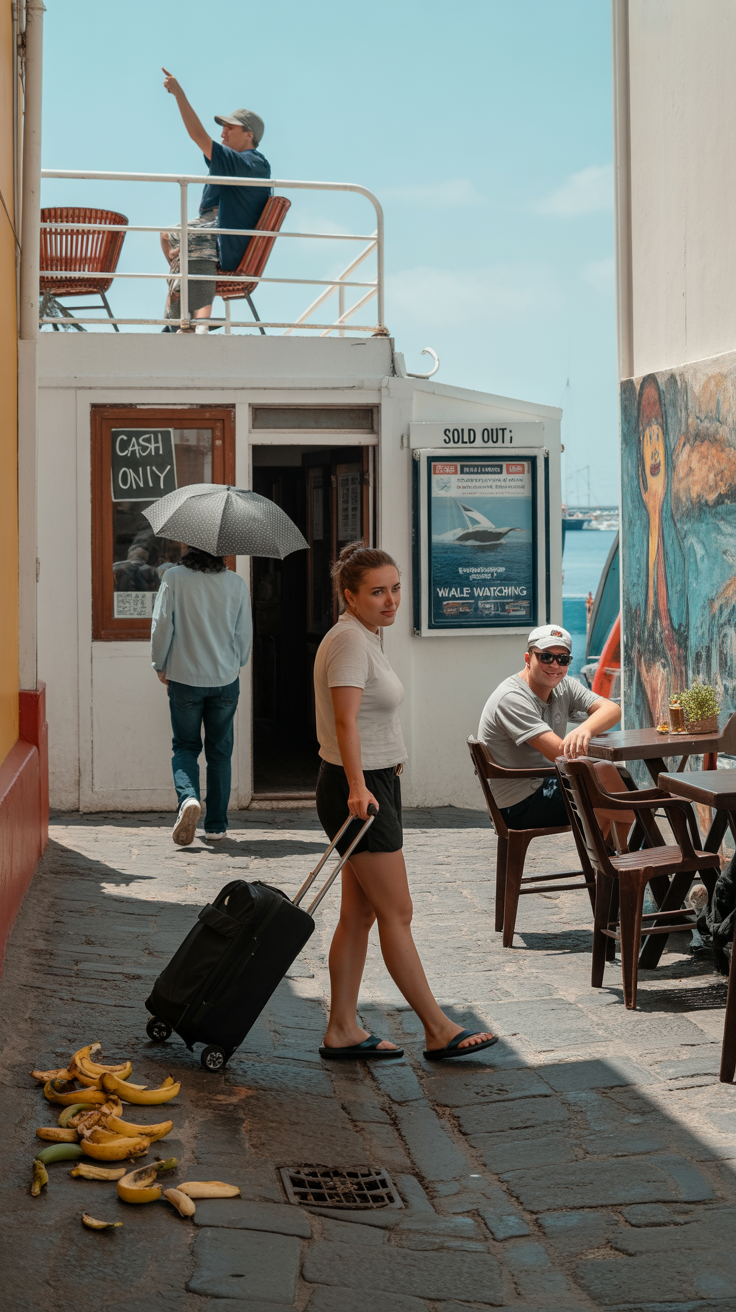
After watching countless cruise passengers navigate Horta over the years, I’ve noticed some common mistakes that are easily avoided with a bit of insider knowledge.
The biggest mistake is treating Horta like a large port city. Many first-timers rush around trying to see everything, when the real magic happens when you slow down and embrace the island pace. Don’t over-schedule your pre-cruise time – leave room for spontaneous discoveries.
Currency confusion trips up many visitors. While Portugal uses the Euro, many businesses in Horta also accept US dollars (though you’ll get better rates using Euros). Credit cards are widely accepted, but smaller establishments prefer cash. ATMs are readily available and generally offer the best exchange rates.
Weather preparedness is crucial but often misunderstood. The Azores have a maritime climate, which means conditions can change quickly. Even in summer, bring a light jacket for evening. The trick is layering – you might start the day in shorts and end it needing a sweater.
Don’t assume you need to book every excursion in advance. Horta’s compact size and excellent local infrastructure make it easy to explore independently. Some of the best experiences – like stumbling upon a local festival or discovering a hidden café – happen when you’re not following a rigid schedule.
Bonus Tips: The local supermarket (Continente) near the port is excellent for stocking up on unique Azorean products to take on your cruise. Their selection of local cheeses, wines, and specialty items is far better than typical cruise port shops. Also, if you’re departing on a Sunday, be aware that many businesses close early or may be closed entirely – plan accordingly for dining and shopping.
Emergency Information
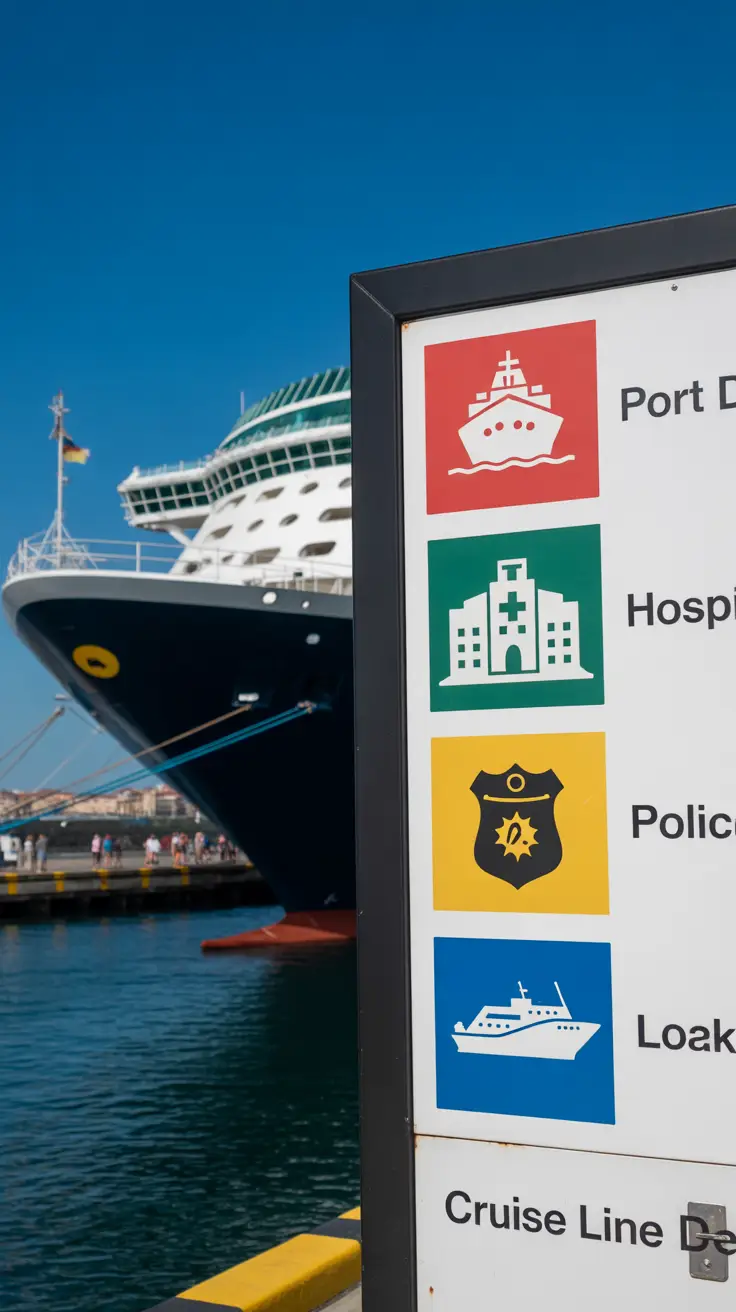
Emergency Services: 112 (universal European emergency number)
Hospital: Hospital da Horta, Largo Manuel de Arriaga, +351 292 200 100
Police: PSP Horta, Rua Serpa Pinto, +351 292 200 420
Port Authority: +351 292 391 693
Tourist Information: Posto de Turismo da Horta, +351 292 292 237
Pharmacy: Farmácia Central, Rua Vasco da Gama (open late and weekends)
US Consular Services: Handled through Lisbon, +351 217 273 300
Questions Fellow Cruisers Always Ask
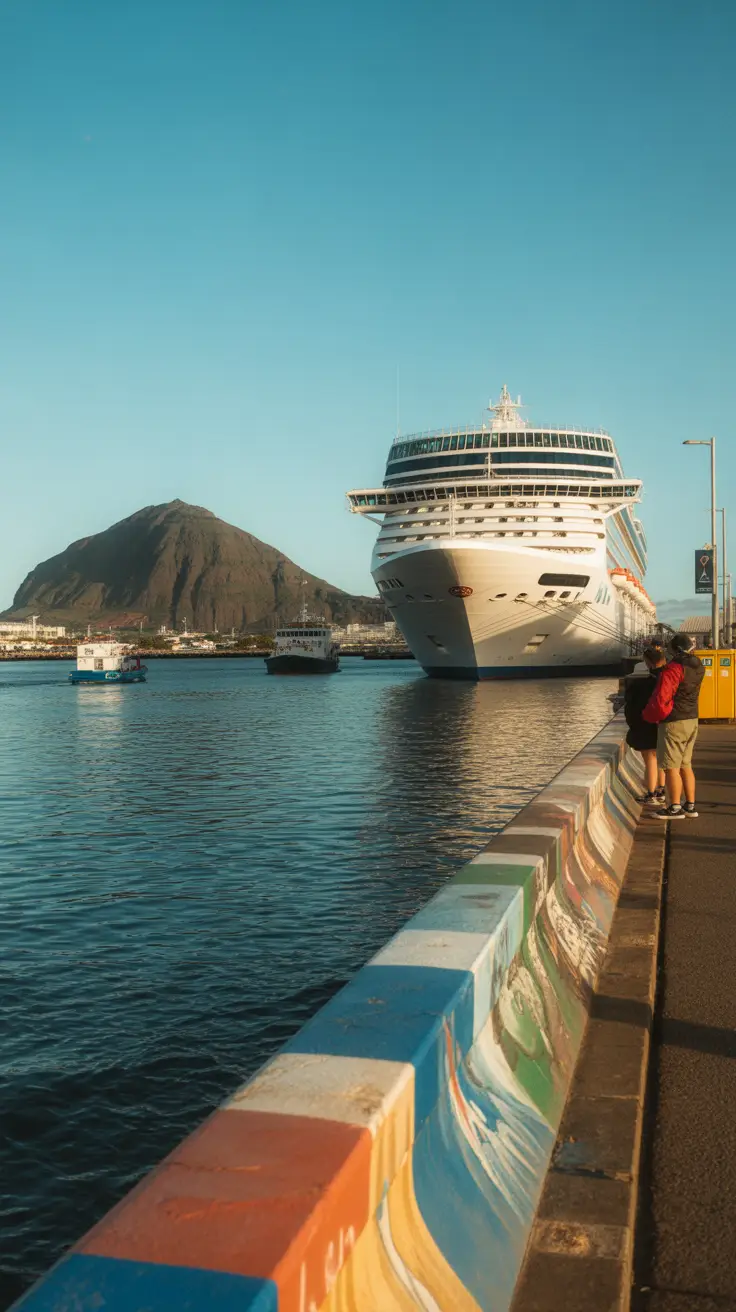
Can I easily explore other Azorean islands during a short stay? While tempting, inter-island flights or ferries typically take a full day when you factor in travel time and schedules. If you only have one day in port, focus on Faial Island itself – there’s plenty to see, and you won’t feel rushed.
Is it safe to drink the tap water? Absolutely. The Azores have some of the purest water in Europe, sourced from natural springs. Many locals prefer it to bottled water, and it’s perfectly safe for international visitors.
What’s the deal with the blue hydrangeas everywhere? These weren’t originally native to the Azores but were introduced and thrived in the volcanic soil and maritime climate. They’ve become so iconic that they’re now considered a symbol of the islands. The best blooming season is typically June through September.
Can I use my cell phone normally? If you have a European or international plan, yes. The Azores are part of Portugal and the EU. US visitors should check with their carriers about international roaming charges, though WiFi is widely available throughout Horta.
Are there any unique local products I should buy? Absolutely! Look for local wines (especially the crisp white Verdelho), artisanal cheeses, traditional pottery from local artisans, and honey produced from the endemic Azorean bee populations. The volcanic soil produces remarkably flavorful agricultural products.
Standing on that same deck years later, I’ve come to understand that Horta offers something increasingly rare in our cruise-happy world: authenticity without sacrifice of convenience. This isn’t a port that’s been manufactured for tourism – it’s a real place where real people live real lives, and they happen to welcome cruise ships with genuine warmth.
Whether you’re beginning your first transatlantic adventure or you’re a seasoned cruiser looking for something different, Horta will surprise you with its ability to make the extraordinary feel comfortably accessible. In a world of increasingly homogenized cruise ports, Horta remains refreshingly, charmingly itself – and that’s exactly why your cruise adventure should begin here.
Thinking about something different? Check out the cruises leaving from Vila do Porto – Santa Maria Island Cruise Ship Port.
